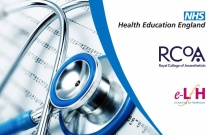Causes, Investigation and Management of Valvular Disease in Pregnancy
Sara Thorne
0.50 Hours
Valvular heart disease may be poorly tolerated in pregnancy; its recognition, assessment and management is detailed in this session.
Causes and Investigation of Coma
Adrian James Varley and Anthony Absalom
0.50 Hours
An overview of the causes, investigation and immediate management of the comatose patient.
Pharmacological Changes During Pregnancy
William Brampton
An introduction to pregnancy associated changes in pharmacology and the effects of drugs upon the uterus and fetus.
Common Electrolyte Disorders (K, Mg Po4)
Clare Hayes-Bradley
0.50 Hours
This session will discuss the management of critically ill patients with abnormalities in serum potassium (K+), magnesium (Mg2+) and phosphate (PO42-).
Pancreas: Pancreatitis Diagnosis (Acute)
Mark Callaway and Conor Corr
0.50 Hours
This session will cover the role of imaging in diagnosis and management of acute pancreatitis, along with complications and the role of interventional radiology management of the patient.
Review article: Intestinal Failure
S. Lal, A Teubner and Dr J L Shaffer
0.50 Hours
Intestinal failure is a specific disease entity resulting from intestinalresection or disease-associated malabsorption and characterized by theinability to maintain protein-energy, fluid, electrolyte or micronutrientbalance.
Acute Myeloid Leukaemia - Introduction, Diagnosis and Management
Jenny Briggs
0.50 Hours
This session describes the pathophysiology, diagnosis and initial management priorities in newly diagnosed acute myeloid leukaemia (AML) and complications that may require critical care input. It also covers how concurrent AML and its treatment may impact on critical illness.
CEACCP: Postoperative cognitive dysfunction after cardiac surgery
Audrey Miang Ying Tan MBBS FRCA Derek Amoako MBChB FRCA
0.50 Hours
Nearly 40 000 people in the UK and many more worldwide have cardiac surgery annually. Adverse neurological outcomes post-cardiac surgery have been well recognized for many years and are an important cause of postoperative morbidity and mortality.
Psychotic Disorders
Iravindranth Thyagarajan, Nagendra Muniswamappa and Vipul Rastogi
0.50 Hours
The aim of this session is to explore the terms psychosis and schizophrenia, as well as to describe the pathophysiology, causes, signs and symptoms and basic therapeutic management of psychosis and schizophrenia.
Regulation of Electrolyte and Acid-Base Balance
Clifford Dwenger
0.50 Hours
This session expands the role of antidiuretic hormone, and discusses other hormonal systems involved in regulating sodium absorption. The concept of 'effective circulating volume', which is central to these systems, is defined.
Chronic Pulmonary Obstructive Disease and Non-Invasive Ventilation
Bryan Yates and Simon Baudouin
0.50 Hours
This session will provide an overview of all aspects of Chronic Obstructive Pulmonary Disease (COPD.) Particular mention will be given to management of respiratory failure due to exacerbations and the use of non-invasive ventilation (NIV).
Anatomical Differences in the Developing Paediatric Airway
Ann Black and David Hatch
0.50 Hours
This session provides an outline of the important differences between the adult and the paediatric airways. The overall objective is to give the trainee the understanding of the development of the anatomy of the airway from birth to adulthood, which is necessary to understand the main clinical implications of these differences.
Coronary Circulation
Ruari Greer
0.50 Hours
This session provides an overview of coronary circulation.
Brachial Plexus, Nerve Supply to the Arm and Hand
Claire Shannon and Rob Hearn
0.50 Hours
This session will describe the anatomy of the brachial plexus and how it is related to other structures within the neck and upper arm. It will also describe the anatomy of the major nerves formed by the brachial plexus, and the sensory dermatomes and muscle groups supplied by these nerves.
Regulation of Electrolyte and Acid-Base Balance
Clifford Dwenger MbChB MRCP FRCA EDIC
0.50 Hours
This session expands the role of antidiuretic hormone, and discusses other hormonal systems involved in regulating sodium absorption. The concept of 'effective circulating volume', which is central to these systems, is defined.
Autonomic Nervous System
Lesley Bromley
0.50 Hours
This session summarizes the structure and function of the autonomic nervous system.
Pain - Peripheral and Central Mechanisms 1
Ian Power
0.50 Hours
This session works through the peripheral and central mechanisms of pain.
Adrenal Hormones II
Simon Fletcher
This session looks in detail at the hormones of the adrenal cortex, principally cortisol and aldosterone.
Pharmacokinetics of Intravenous Anaesthesia
Murali Subbaramaiah
0.50 Hours
This session explains the mechanism of ‘target control infusion’ (TCI) and the various pharmacokinetic models used.
Pain Management in the End of Life Patient
Annabel Law
0.50 Hours
This session will explore the issues surrounding end of life care and identify the types of pain experienced by people as they near the end of life. Later, it will describe how to assess pain in such patients and offer guidance on the methods that can be used to manage pain in those nearing the end of life.
Care of The Newborn
Aimee Yarrington
0.50 Hours
The aim of this session is to provide an understanding of the clinicians role in caring for the baby initially at birth and prevention of harm.
Cellulitis
Mr Benjamin McWalter
0.50 Hours
This session aims to give information relating to Cellulitis in adults that may be encountered during paramedic practice, in either an Emergency, Urgent or Primary care setting.
Community Acquired Pneumonia
Mr Benjamin McWalter
This session aims to give information relating to Community Acquired Pneumonia (CAP) in adults that may be encountered during paramedic practice, in either an Emergency, Urgent or Primary care setting.
Ankle Injuries
Sean Mower
0.50 Hours
An effective advanced assessment of an ankle injury will allow a paramedic or clinician to determine a management plan that leads to the most appropriate and helpful management. This session aims to provide the underlying theory and assessment techniques to carry out these assessments effectively.
Assessment and Management of Burns
Lisa Clancy
0.50 Hours
The aim of this session is to refresh your knowledge on the subject of burns and to describe current best practice for treating minor burns injuries in the pre-hospital environment. Following a review of skin anatomy and burn pathophysiology, this session will demonstrate how to make an assessment of burn depth and percentage....
























